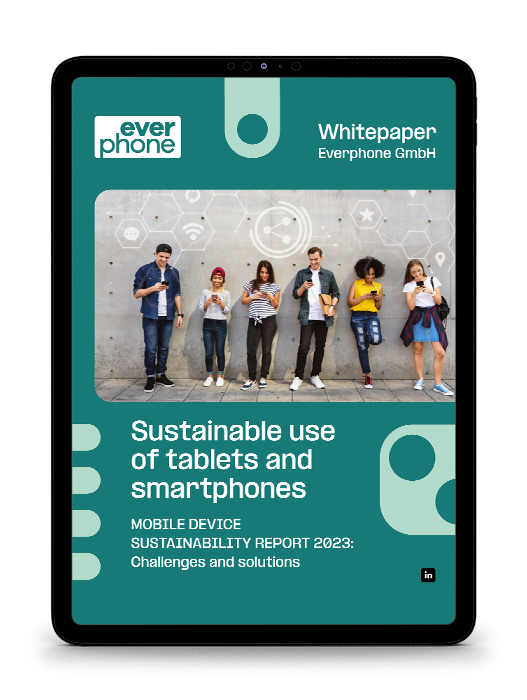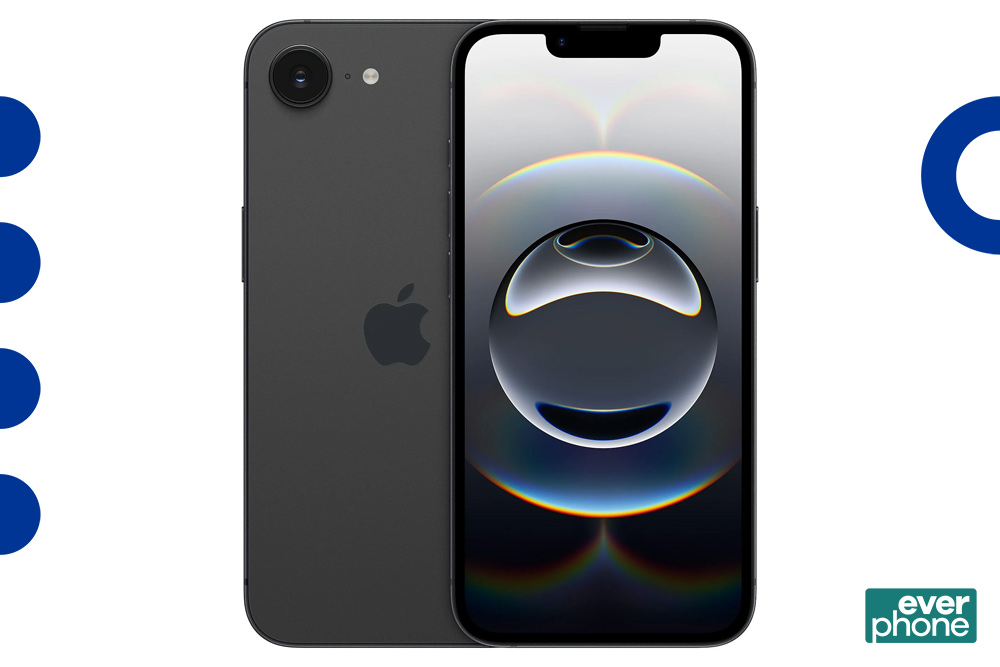Business customers in Germany complain about the enormously high expenses for telecommunications. Rightly so. Germany ranks twentieth (!) in Europe, far behind the Nordic countries, the Baltic States and the Netherlands. Why is that?
Telecoms cost categories
Here we go! If you compare the cost categories for mobile communications on a monthly basis, it becomes clear: the main cost drivers by far are the phone plans. If you break down the costs for the smart devices themselves on a monthly basis, they only amount to a quarter of the tariff costs. Service costs (smart device logistics and installation) even amount to less than ten percent of the telecoms expenses.
The tariff costs should actually fall with the steadily falling prices for data and telephony options. So it’s no wonder that mobile phone providers apparently give attractive discounts on devices in order to secure their high tariff income.
Tariff spending remains high in Germany
How is the market actually behaving? The volume of telecommunications services used in large companies has tended to stagnate in the last two years: Many have already provided their employees with 5 gigabytes or even 10 gigabytes at flat rates, and a further increase in data volumes has not yet been necessary for business purposes.
Data and telephony prices are falling steadily. Nevertheless, the price levels in German companies are consistently at a pleasingly high level – pleasing, of course, only from the point of view of mobile network operators and providers.
Business customer prices vs. end-consumer prices
While flat rates with five gigabytes of high-speed LTE are available for as little as ten euros in the B2C market, tariff costs in the enterprise sector often amount to 60 or even 80 euros per user and month . We know from discussions with many IT managers and buyers: The ratio of tariff costs to the proportionate device costs is around 4:1 – despite supposed bundle bargains and Techfund agreements (more on this in a moment).
Telecoms cost management can help
As we’re seeing an increase in the number of employees who will be equipped with mobile devices, therefore, it is imperative that companies implement stringent telecommunications cost management to counteract the impending cost explosion.
What do you need to bear in mind? We always address three cost drivers for our customers
Cost driver 1: Tariff and device bundling (“bundle”)
Telecommunications providers put together packages of smart devices and rate plans: on the surface, a sensible combination. On closer inspection, however, the benefits are questionable. For a large proportion of our customers, the rate block is 3 to 4 times the average monthly cost of a device.
Tariffs have the highest margins for telecommunications providers. Therefore, they give generous discounts on smart devices to divert the focus from the actual cost driver and to hedge the high tariff prices. Naturally, they have little interest in changing this status quo.
Among these generous discounts, so-called “tech funds” for mobile devices are particularly common. An attractive credit – until the buyer realizes that he is actually financing these payments, which are disguised as customer loyalty, by remaining tied to the Techfund in an overpriced tariff.
There are very small discounts on Apple devices in particular – if an offer comes along with a discount of more than 15 percent on the device, you can be sure that you are paying too much elsewhere.
Locked-in: Arrested in the business tariff
As soon as companies decide on a bundle, buyers’ hands are tied. They cannot re-negotiate the tariffs because then they lose the Techfund. At the same time, the device supply for your employees through the bundle now also depends on the telecommunications company. Ultimately, this dilemma leaves the purchasing department with little room for maneuver.

In Telecoms Expense Management, you need to strategically plan your moves
Four out of five DAX companies are already familiar with the problem: smartphones, tablets and tariffs are therefore consistently purchased separately. This creates the space for re-negotiations, which the use of bundle offers do not allow.
So it is not surprising that companies that use bundles are less likely to tender framework agreements . As a result, double-digit savings potential from falling prices for data volumes and telephony are simply left lying around.
Tip: Regular calls for tender
If you’ve already negotiated your contract, put a reminder date on your calendar: there’s a three- to six-month notice period before the master agreement expires.
Tenders are an essential tool for any ambitious Telecom Expense Management (TEM). Mobile services should be advertised every 24, but at the latest every 36 months. Tenders are the biggest cost lever because they are the only ones that make it possible to benefit from the more up-to-date, cheaper mobile phone contracts on the market.
Incidentally, in the case of tenders involving a change of provider, companies can also hope for significant one-off payments in addition to tariff savings. If you have any questions about how you can achieve such negotiation successes, we will be happy to advise you: If necessary, simply write us a short message.
How does telecom cost management help?
We recommend that you use specialized companies for these tenders. This is because the specialists know the current state of the market best and relieve the burden on purchasing, which from our experience is not very exciting about this commodity service. Another advantage is that the telco specialists provide support in putting together sensible rate models for individual consumption profiles.
Cost driver 2: flat rates
Flat rates are supposed to avoid costs. Surprisingly, but most of the time, they don’t do it as planned.
Welcome to the Jungle
The tariff structures for mobile communications are deliberately kept complex – both in the consumer area and for business tariffs there is a confusing jungle of tariffs made up of monthly contributions, minimum terms, discounts, escalation prices, one-off payments and framework agreements .
It’s almost impossible to keep track of everything here: When do contracts end? When are they tacitly renewed? When do discounts expire?
Historically, this complexity has led to a great deal of effort in many companies. The telecommunications companies reacted to this with flat rates : all-inclusive tariffs at fixed prices, in which “everything” is already included. This would reduce the complexity of billing. Sounds too good to be true? It is.
The problem with the flat rate in large companies is that purchasing often tries to negotiate an average of the consumption of the heaviest and lightest users so that there are fewer “bill shocks” – high billing outliers, like in the case for data packages or roaming. In our consumption analyses, we were able to determine why this is problematic:
- More than 50 percent of mobile phone users in the company use significantly less data and telephony than agreed in the flat rate. So the company overpays for the consumption of more than half of its users. But does the flat rate really offer protection against cost explosions? Not at all.
- Around 30 percent of users consume more than the agreed data volume. Again, companies pay too much when additional data packages are added to the mobile phone bill.
- The biggest cost driver, however, is roaming. Roaming contributes the bulk of the ‘Bill Shocks’. A few episodes of the Netflix series on a business trip abroad, some video telephony on the project in Dubai – enormous costs are incurred, which quickly reach the four-digit range.
How does telecom cost management help?
There are dedicated TEM software and TEM-as-a-Service platforms. In addition to cost center-based billing, TEM software also enables anonymous analysis of consumption at SIM card level. Data analysts use it to optimize all tariffs within a framework contract every month: frequent users get the cheapest tariff for high volumes and infrequent users the cheapest tariff for low volumes. In this way, up to 45 percent of the monthly tariff costs can be saved.
To avoid roaming bill shocks, the platform can be linked to the travel booking platform. Employees who book flights or hotels in high-priced roaming countries automatically get a roaming option added; for other employees, roaming outside the EU is blocked and must be requested.
Cost Driver 3: Operational complexity, billing and auditing
Another hurdle for companies is operational complexity. This is due to three factors:
- the increasing number of SIM cards,
- the reallocation of cost centers and
- checking mobile phone bills.
I. The number of SIM cards is increasing
First, companies are faced with an ever-increasing number of mobile devices and SIM cards (Enterprise Mobility Management). Often there is a lack of basics, for example, the knowledge of which SIM card is used by which employee or whether SIM cards and/or devices are simply lying unused in the closet.
The challenge of having to manage countless SIM cards will increase exponentially with the emerging IoT applications (“Internet of Things”). We can already see the complexity today: water suppliers, for example, use tens of thousands of SIM cards in water pressure sensors.
II. Allocate cost centers
Second, many companies try to allocate their telecommunications costs to cost centers based on consumption. The goal is usually to encourage responsible use. With a fleet of more than 1,000 SIM cards, however, the cost center-based entry of the tariffs leads to a great deal of administrative effort. Every step towards automated or outsourced tariff management is therefore helpful.
III. Check mobile phone bills
Third, errors also frequently occur in the automated billing of telecommunications providers, for example, because SIM card cancellations were not carried out or additional costs are billed that were not consumed.
In order to reduce costs, all cell phone bills must be checked against the cell phone service purchased every month. All miscalculations should subsequently be requested from the telecommunications provider and their reimbursement tracked.
 Checking mobile phone bills for errors is real detective work
Checking mobile phone bills for errors is real detective work
How does telecom cost management help?
Here, too, TEM software and TEM-as-a-Service platforms can help. These make it extremely easy to break down billing data (item details/EVN) from all telecommunications providers nationally and internationally and to allocate them to cost centers based on consumption.
Since both cost and consumption data can be evaluated anonymously, an invoice verification is then associated with significantly less effort. Incorrect bookings are reported directly to the provider and do not even end up in the payment run. In addition, unused SIM cards can be identified and deactivated immediately. All checked invoice data ends up directly in the ERP via an interface.
Telephone Cost Management Projects
That was quite some information. Are you still with me? If you need to strategically reduce your mobile costs in the future, I’ll conclude by summarizing for you which project steps are usually necessary in the process. More about this in another section.
If companies plan to improve their mobile communications equipment, the following typical project steps usually take place:
- assess status quo
- identify analysis
- Solution concepts (e.g. tariff models, procurement models, outsourcing, contract management, …)
- Modeling of organizational adjustments
- Pilot project (e.g. proof of concept in individual department or branch)
- after validation: global roll-out
TEM software
Telecom management can be supported by specialized TEM software. You can find an overview of TEM software providers here: https://www.capterra.com.de/directory/30112/telecom-expense-management/software
Everphone takes a holistic view of your mobile communications strategy. Our goal is to sustainably reduce expenses in your company and save costs. In addition to renting a company mobile phone, we also offer our customers a phone plan service.






















